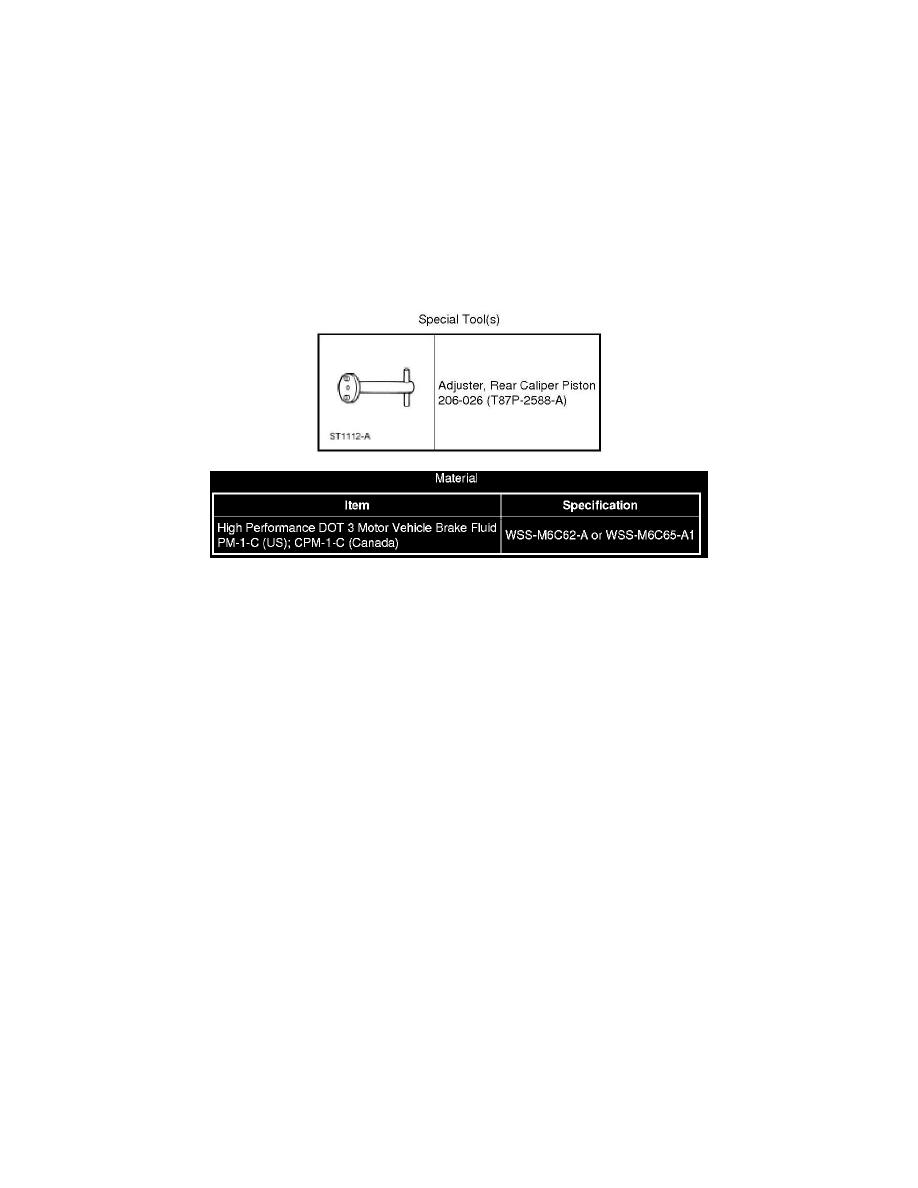Fusion AWD V6-3.5L (2010)

4. NOTE: On hybrid vehicles, the brake booster push rod has an elongated slot that attaches to the brake pedal with a clevis pin. The elongated slot
allows for a small amount of pedal travel (free play) to occur without the brake pedal applying pressure on the booster push rod. When performing
a bleed procedure, it is important to push the pedal through the air gap, so that the clevis pin is contacting the brake booster push rod. Except when
required by the scan tool, the ignition key must remain off during the bleed procedure to allow minimal force required to push through the gap.
Have an assistant slowly pump the brake pedal until clear fluid flows from the brake tubes, without air bubbles.
5. Remove the short brake tubes and install the master cylinder brake tubes.
-
Tighten to specifications, refer to Specifications.
6. Bleed the brake system, refer to Brake System Bleeding See: Brake System Bleeding.
Rear Brake Caliper
Component Bleeding
Rear Brake Caliper
WARNING: Do not use any fluid other than clean brake fluid meeting manufacturer's specification. Additionally, do not use brake fluid that
has been previously drained. Following these instructions will help prevent system contamination, brake component damage and the risk of
serious personal injury.
WARNING: Carefully read cautionary information on product label. For EMERGENCY MEDICAL INFORMATION seek medical advice. In
the USA or Canada on Ford/Motorcraft products call: 1-800-959-3673. For additional information, consult the product Material Safety Data
Sheet (MSDS) if available. Failure to follow these instructions may result in serious personal injury.
WARNING: Do not allow the brake master cylinder to run dry during the bleeding operation. Master cylinder may be damaged if operated
without fluid, resulting in degraded braking performance. Failure to follow this instruction may result in serious personal injury.
NOTICE: Do not spill brake fluid on painted or plastic surfaces or damage to the surface may occur. If brake fluid is spilled onto a painted or
plastic surface, immediately wash the surface with water.
NOTE: When any part of the hydraulic system is disconnected for repair or installation of new components, air can get into the system and cause
spongy brake pedal action. This requires bleeding of the hydraulic system after it is correctly connected. The hydraulic system can be bled manually or
with pressure bleeding equipment.
NOTE: Due to the complexity of the fluid path within the rear integral parking brake calipers, it may be necessary to follow this procedure when new
calipers are installed.
1. NOTE: This procedure is necessary only when installing a new rear brake caliper. To bleed the brake system, refer to Brake System Bleeding
See: Brake System Bleeding.
Remove the wheel and tire. For additional information, refer to Wheels and Tires.
2. Remove the 2 brake caliper guide pin bolts and position the brake caliper aside.
